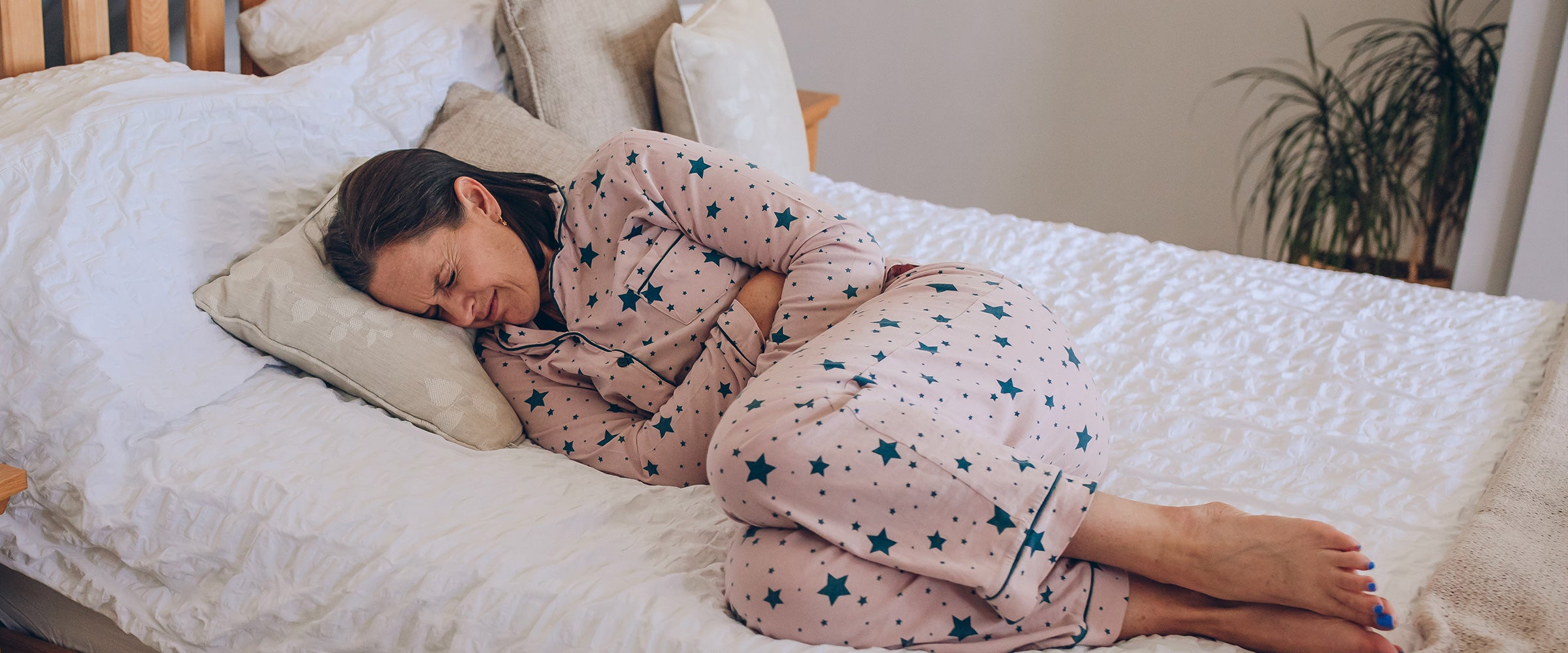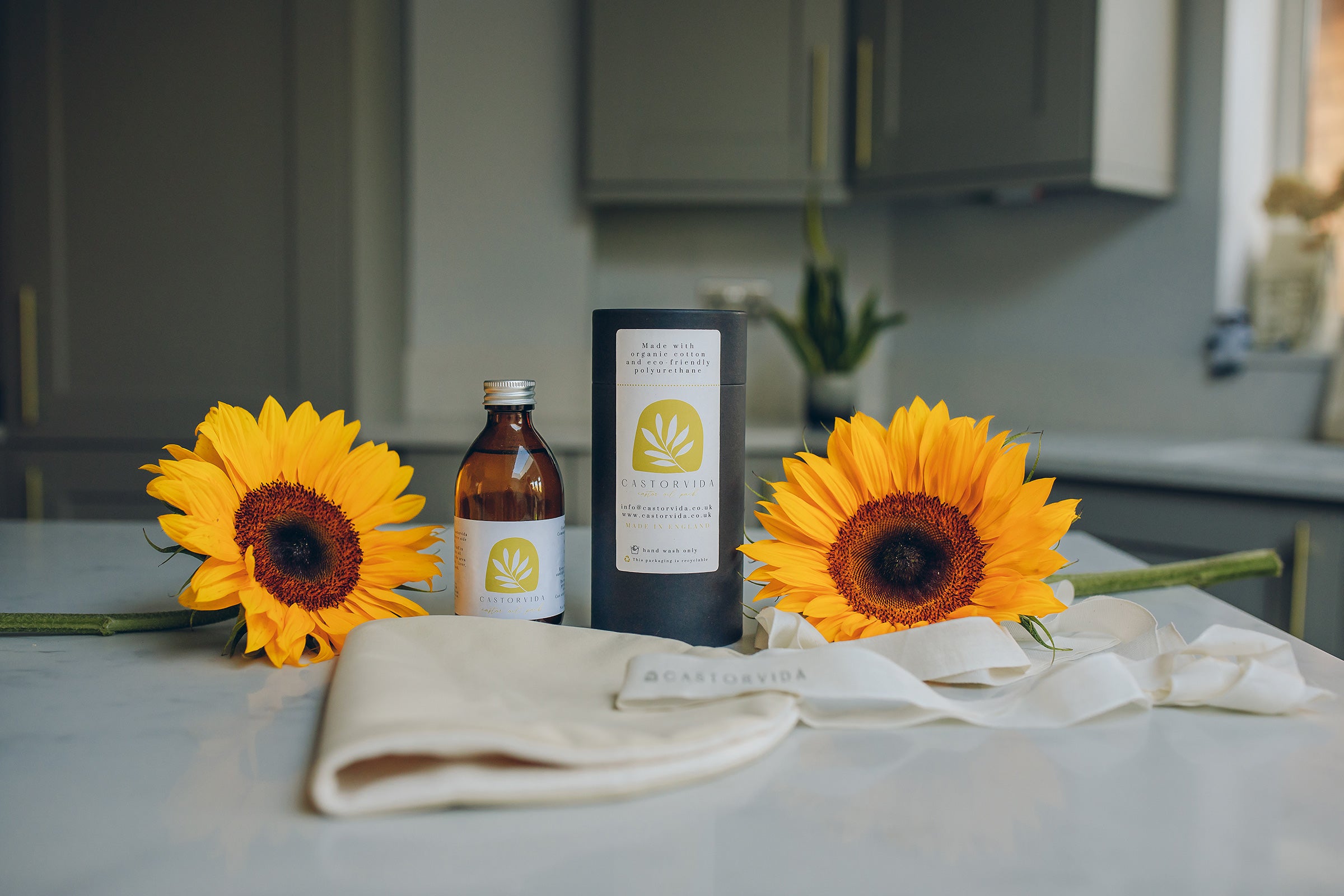Castor Oil Packs For Endometriosis
If you are an endometriosis sufferer, or suspect you may be one, you have likely been on the extremely frustrating receiving end of a medical professional telling you that ‘maybe it’s just a really bad period?’. And you are not alone. Millions of women the world over have been in the exact same position as you. Not only does the condition come with physical discomfort – cramps, bleeding, back pain and more – but the emotional and mental load (especially if still undiagnosed) is a lot to bear.
As an ailment that plagues 1 in 10 women – around 176 million people – it seems ludicrous that it’s so hard to detect. In an article for Forbes.com, Lone Hummelshoj, chief executive of the World Endometriosis Society and the World Endometriosis Research Foundation, notes ‘the normalisation of painful symptoms is a huge issue. And there’s still a very low recognition of endometriosis at the general practitioner level – that’s where a young woman would go with her painful symptoms. If these symptoms are dismissed as primary dysmenorrhea [the medical term for painful menstrual periods which are caused by uterine contractions], which it may be for some people, then a doctor won’t investigate further and this contributes to the delay in diagnosis and timely management of symptomatic endometriosis.’

According to Medical News Today, despite the fact that around 10–15% of all women live with endometriosis, it can take anywhere between four and 11 years for women to receive the correct diagnosis, and as many as six out of every 10 cases of endometriosis may remain undiagnosed. If you have endometriosis, or think you might, read on for key symptoms and suggested support to manage your discomfort.
What exactly is endometriosis?
The World Health Organisation (WHO) defines endometriosis as:
A disease characterised by the presence of tissue resembling endometrium (the lining of the uterus) outside of the uterus. It causes a chronic inflammatory reaction that may result in the formation of scar tissue (adhesions, fibrosis) within the pelvis and other parts of the body. Several lesion types have been described, including:
- Superficial endometriosis found mainly on the pelvic peritoneum
- Cystic ovarian endometriosis (endometrioma) found in the ovaries
- Deep endometriosis found in the recto-vaginal septum, bladder and bowel
- In rare cases, endometriosis has also been found outside the pelvis
What are the common symptoms?
Similar to monthly menstruation, symptoms include:
- Painful periods
- Chronic pelvic pain
- Pain during and/or after sex
- Painful bowel movements
- Painful urination
- Fatigue
- Depression or anxiety
- Abdominal bloating and nausea
These symptoms often occur during your period, but can be experienced at any time of the month. Other, less common symptoms include:
- Changes during urination (including increased frequency and pain)
- A change in bowel movements (constipation and/or diarrhoea),
- Back pain and abnormal uterine bleeding
- Chest pain and difficulty breathing
What can you do to get an accurate diagnosis?
If you suspect that you have endometriosis you should seek out a specialist and bypass general practitioners. Book an evaluation with an OB/GYN, fertility specialist or endometriosis specialist, who will likely perform a physical exam, a pelvic ultrasound and blood tests. Depending on what your physician discovers, an MRI or Laparoscopy may also be advised to more accurately determine a diagnosis.

What can you do to ease your pain and discomfort?
Castor oil contains ricinoleic acid, a fatty acid known for its anti-inflammatory properties. By reducing inflammation in the liver, castor oil helps protect against cellular damage. Additionally, the oil's antioxidant properties aid in neutralising free radicals, further supporting liver health.
1. Apply heat
Heat is known to ease discomfort associated with period pains and endometriosis – it is one of the most suggested remedies for mild to medium pain. Run a warm bath and submerge your abdomen; or apply heat using a hot water bottle or heating pad.
2. Use castor oil
Castor oil has been used to treat endometriosis for decades and should be applied when cramps begin. You can massage castor oil directly onto the affected area of your stomach or use a convenient and comforting castor oil pack. Learn more about the benefits and uses of castor oil packs here.
3. Avoid foods with inflammatory properties
Avoid or reduce your intake of spicy foods, dairy, coffee, alcohol and processed or high-sugar foods. Up your intake of anti-inflammatory foods like leafy green vegetables, salmon, ginger, blueberries and chia seeds.
4. Join a support group
For your mental and emotional wellbeing, locate real-life and virtual/social media support groups where you can talk to people who know exactly what you are going through. Here are some suggestions:
*Always seek the guidance of your doctor or other qualified health professional with any questions you may have regarding your health or a medical condition.


